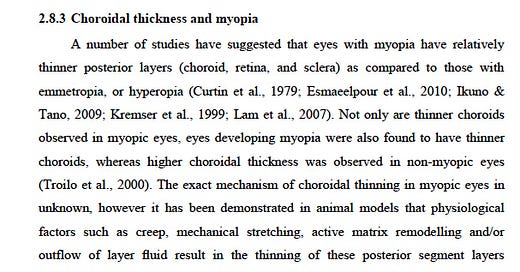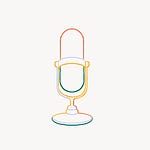First interview: Esther Joy van der Werf
The Rumble link for the video is HERE. Esther has been busy for decades treating vision without drugs, supplements, or corrective lenses. Since the plandemic, most of her clients have been online. She was kind enough to answer every question I could think of. I learned more in an hour with her than in all the expensive optometry and ophthalmology visits of my entire life.
Since I learned all this, I have been barely using my glasses and have been practicing sungazing and some of her other techniques. I have an appointment with Esther next week and will report back.
References
Her main website is www.VisionsOfJoy.org.
Optimal Eyesight is Esther’s book. It explains how eyestrain leads to myopia, astigmatism, dry eyes, light sensitivity, night blindness, computer vision syndrome, amblyopia, and strabismus and what you can do about it.
To avoid or eliminate the need for reading glasses, see Read Without Glasses at Any Age.
The Better Eyesight Podcast discusses Dr. Bates’s original work. I am subscribed.
For tips on improving your eyesight naturally and information on upcoming classes, sign up for Visions of Joy News.
HERE is another Esther Joy interview about reversing astigmatism.
THIS is yet another reference.
Second interview: my physician friend John
John pulls no punches about what is being done to our eyes by the vision “profession:”
Transcript, abridged for clarity:
My story started at eleven when I had trouble seeing the blackboard. The ophthalmologist gave me glasses with a two-and-a-half diopter correction. These prevented me from playing soccer with my friends, skiing, and other activities. I was told that I would go blind without them.
With or without the glasses, I couldn't see correctly. With the lenses, I was so dizzy that I sometimes vomited. My brain was not used to getting all that correction, and it caused massive psychological trauma.
I knew something was wrong, but I didn't know what, why it happened, or how it started progressing. The ophthalmologist told me to always wear glasses, even for reading. This was almost impossible because of the high correction. I couldn't see the letters in the books, but he said I must push on and get used to it.
Later, I learned that's the worst thing you can do. Wearing glasses for long periods or reading is an abomination. I was so uncomfortable that I spent most of my time without glasses. Life went by, and many years later, I tried contact lenses.
That restarted the myopia. I was stuck at two and a half diopters; then later, I got severely poisoned by ethyl mercury from contact lens eye drops. Many eye drops and lubricants contain this, which has been camouflaged with the name “thimerosal.”
After several years, I became allergic to mercury, and it began to burn my corneas. This is a separate and more acutely severe illness than mercury toxicity. I was in my early 20s, and I was told that if I did not get a corneal transplant, I would go blind.
My doctors suggested semi-rigid contact lenses, which helped, and when I stopped all the drops except saline, my eye irritation improved. As this happened, I was undergoing many years of surgery, studying medical books, and other close-up work. Then, after 30 years, the contacts began ulcerating my eyes.
I couldn't see well with glasses, so the optometrist gave me another set of contacts. At this point, I was 5.5 diopters. She decided to increase my correction to six, which brought back all my childhood trauma.
So I insisted on a half diopter less. She was shocked and didn't like the idea. But wearing the new lenses, my eyes corrected half a diopter in three days. So I went back and told her to remove another half-diopter. After two weeks, I was 20-20 again. I had knocked off one full diopter in less than three weeks.
I started researching the topic. At first, I read traditional medicine because that was my background, and I had been trained to discredit alternative sources. However, most of the medical experiments related to these are ignored. For supplements and many alternative therapies, supporting research exists—there are tens of thousands of papers about vitamin D, for example. But these never translated into patient care.
I learned that myopia has been studied in lab animals by putting myopia-inducing glasses on them. Someone even did this experiment with goldfish. When the lenses were removed, every species reversed their myopia and returned to optimal sight. (As with everything in science, there are exceptions.)
I thought about what happens to our children.
As a surgeon in Africa, I never saw a child with glasses. Many of them were reading and going to school. Most of the schools were outdoors in natural light, and even if they were indoors, the lighting was excellent. After school, the kids would always go out into the sunlight and play in the natural light of the forest. But when I worked as a doctor in California, most African-American patients wore thick glasses.
Opthalmology claims that visual problems are genetic, but this is absolute nonsense.
That's the same excuse used for all kinds of diseases—cancer, inflammatory bowel disease, and neurological diseases. Whenever genetics are blamed, no progress is ever made. That is the point—we are trained to fail diagnostically and prescribe drugs. I think the psychopaths are doing this to us purposefully.
I learned that the eye treatment industry is a financial juggernaut, just like the pharmaceutical industry. Glasses, contacts, eyedrops, sunglasses, and doctor care cost billions and billions, and nobody thinks much about it.
How does it all start?
Psychological issues are often critical. As a child, you come from total freedom, and then suddenly, you are locked in a room and fed all kinds of garbage. You are required to do close-up work and reading. The light sources are often horrible fluorescent tubes. Hours and hours and hours of reading and studying, frequently locked into books.
In contrast, if you look at children in nature, such as aboriginal people, their eyes are constantly moving in all directions and all depths. Their focus is far, nearby, and on the other side. The head is always moving.
Books are pathological; for a child, it's very pathological because he's stuck with his neck bent, which means less blood flow.
Inside the eye is a flexible lens surrounded by ciliary muscles, which allow compression and dilation of the lens. This focuses light on the retina, and these muscles spasm when humans focus on close work at a reading distance for hours.
It locks in at a short distance, so vision is blurry when looking at the blackboard. This is a focusing or accommodation problem that produces myopia.
This muscle spasm is similar to what happens if you don't lift weights properly or are stuck in one posture doing surgery. Most children experience this. They would heal if they went on a fishing trip to an island.
With this muscle spasm, the eye is functionally myopic, but it's not myopic yet.
Here is what happens: You go to the optometrist or ophthalmologist, depending on the country. The examination environment is unnaturally dark. Usually, they try adding a half-diopter; when you read the same letters, it's a little clearer. They give you an unnatural, overcorrected prescription that gives you “Superman” eyes. You are supposed to use the lenses all the time.
The third lens of the eye is its length, which can change by a few micrometers. Nomadic tribes, nomadic animals, or even animals in different seasons and environments may be able to adjust this slightly.
In myopia, the focal point is in front of the retina, which is why images are blurred. The eye has no way to chase that point. The opposite occurs in hyperopia, where the focal point is behind the retina. This can be changed using a lens.
When this happens, the eyeball is shorter. The focal point is behind the retina, but your eye can correct this if it strains. It can bring the focal point forward but not backward.
With a pair of glasses, your brain calculates the focal point. It reveals that you're overcorrected, and the focal point is slightly behind the retina. The eye distorts the anatomy by elongating. It might be two millimeters; this produces several diopters of change.
But when that happens, your eye compensates yet again, and you start becoming myopic again. This is “progressive myopia,” and you need new glasses as the eye begins to deteriorate.
This process stretches the retina, making it thinner and more vulnerable.
The vitreous humor cannot stretch, so stretching the eye this way causes the plasma to enter and alter the composition of the liquid around the lens. This readily carries oxygen to the lens and may cause cataracts.
Therefore
Retinal diseases of all sorts are caused by our efforts to correct myopia.
Cataracts are common in myopic patients; this is also related to corrective lenses.
Glaucoma occurs because the eye has been stretched, drainage is compromised, and the pressure in the eye elevates.
In some cases, these cause blindness; our attempts to correct myopia are the leading causes of blindness in the West.
Optic nerve degeneration and retinal detachment are also related to corrective lenses and the eye’s adaptation.
By a certain age, if thick glasses are used, everybody has retinal problems, and some have retinal detachment. Ordinary, healthy people never do.
Myopia doesn't exist in the natural world; it is induced by civilization and encouraged by big companies. They know precisely what they are doing.
Indigenous people focus their eyes everywhere and move their heads along with their eyes. They can learn to read just as we can.
Common sense is the least common of all senses.
It should be used to approach visual correction.
Optometrists universally use corrective lenses that are too strong; they should generally be used to correct a half-diopter at most.
Some people require a lot of time for this process, but others can speed it up and get rapid results.
When you're reading, avoid glasses. You do not need them; they are too powerful. I was reading with 5.5 diopters, which made no sense. So I immediately went to using 2.5 diopters and could still read perfectly. My eyes were utterly relaxed. You can accomplish this using two sets of glasses.
You must be careful about driving; that is a different issue, and you should not take risks.
To improve your vision, use natural cycles and natural light, spend time outdoors, move all you can, try to see things at a distance, read signs, and read letters at a distance. Go out and walk. Never put your glasses on the first thing in the morning. Put them on a bit later. Let your brain know you have a problem you want to fix. It will take time.
Reduce your correction gradually. It takes weeks to months. Do not simply give your brain glasses—-make it work. Leave them off while you are in the bathroom. After a while, you will not need them for anything.
Avoid ciliary spasms by frequently looking away from close work and gazing into the distance. As you read, glance often at things beyond seven meters and then return to the book. Make your ciliary muscle pump your lens. Just a little glance makes all the difference.
Of course, we all have to work and read, but while we do, look at things from a further distance to test your limits. When reading, try to see your book from a few feet more. Log your results. Never bring it closer if you can see further. Work your eyes!
Form habits rather than doing exercises because exercises get boring, and you will drop them. Gradually move your books farther away and use proper light.
Reduce your reading glasses correction. You will progress, but some people need months or even years. I started at 5.5 diopters and now need no glasses.
Yogis have practiced sun gazing for thousands of years, and we can learn from them. Your eyes are safe if you stare at the rising and setting sun at dawn and dusk. The light must pass through more of the atmosphere than at midday. Start with ten seconds or so and progressively increase your exposure. This is healing and causes no eye damage. Do it without glasses and never behind glass. This blocks ultraviolet light.
Anyone with glasses or children should learn about this program. Some therapists can help. Putting glasses on young kids tortures them for the rest of their lives—it is a crime against humanity.
John’s references
“Eyeglass monopolies are ripping us off,” by Jim Arnold of Liar’s World substack. I’ll put this in a Parting shot soon.
Parting shot #1 from a reader
I was diagnosed with dry eyes that make it difficult to see. My ophtho gave me Restasis, an expensive eye drop. He told me to use it twice a day for life. But when I added vitamin D 5000 IU and vitamin K to my daily supplements, my seasonal allergies were reduced, and my dry eyes vanished.
My D level was 42 in 2014, but when it was checked after I supplemented D, it was 95. Every time I or someone I know asks their doctors for a D level in the last two years, they hear a new response, “Insurance doesn’t cover it.”
Yoho note: listen to Esther’s interview at the top to learn how to improve your blinking to eliminate dry eyes without a supplement.
Parting shot #2 from Polymath Paul about protecting your eyes
You may have heard of the carotenoids and antioxidants beta-carotene, lycopene, zeaxanthin, lutein, and canthaxanthin, but have you heard of astaxanthin? One of the most potent carotenoids and antioxidants found in nature, astaxanthin benefits many aspects of health, from diminishing wrinkles to upgrading your workout routine.
Often dubbed the “king of carotenoids,” research shows that astaxanthin is one of the most powerful antioxidants found in nature. Its ability to fight free radicals is far higher than vitamin C, vitamin E, and beta-carotene.
Astaxanthin also helps decrease inflammation. Its antioxidant properties are believed to additionally protect against certain types of chronic disease and reverse skin aging.
Although studies in humans are limited, current research suggests that astaxanthin benefits brain and heart health, endurance, energy levels, and even fertility. Animal studies have demonstrated that the esterified type works best. This is the natural form produced when astaxanthin biosynthesis takes place in microalgae.
Astaxanthin is likely the best we have to protect the macula. My beloved grandfather struggled with macular degeneration for several decades. Losing his vision and ability to drive was like a death sentence for him.
It completely prevents sunburn for me, and thus I don't need to slather on worthless, polluting, chemical-based sunscreens that kill coral reefs, bio accumulate in the body, do nothing about UVA rays, and only block the healing UVB rays that make vitamin D. Yoho comment: I did not verify this section.
Paul’s references
Astaxanthin Benefits for the Skin, Brain, Heart & Muscles
Myopia, a modern yet reversible disease
Get Affordable Eye Exams and Glasses Without Insurance
Mewing can replace your orthodontist Yoho note: I have not verified this, either, but it seems credible.
Epilogue: what happened to me?
After two weeks of practice and in-person instruction from Esther Joy, my visual acuity has improved. I will say more in a month or two.
















Share this post